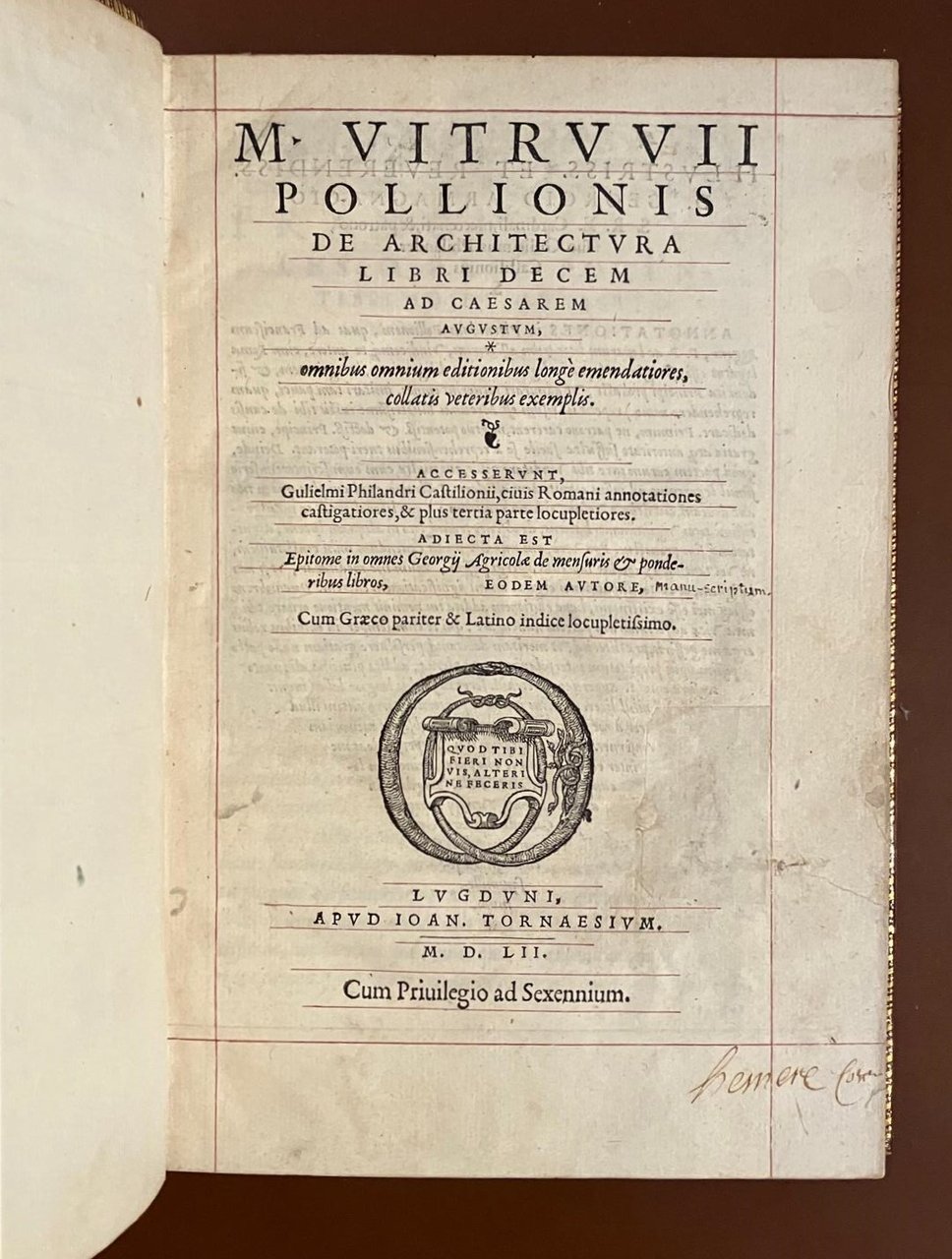

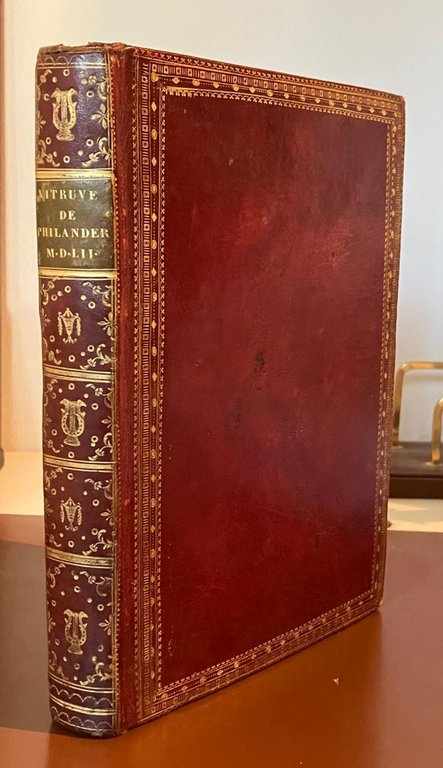
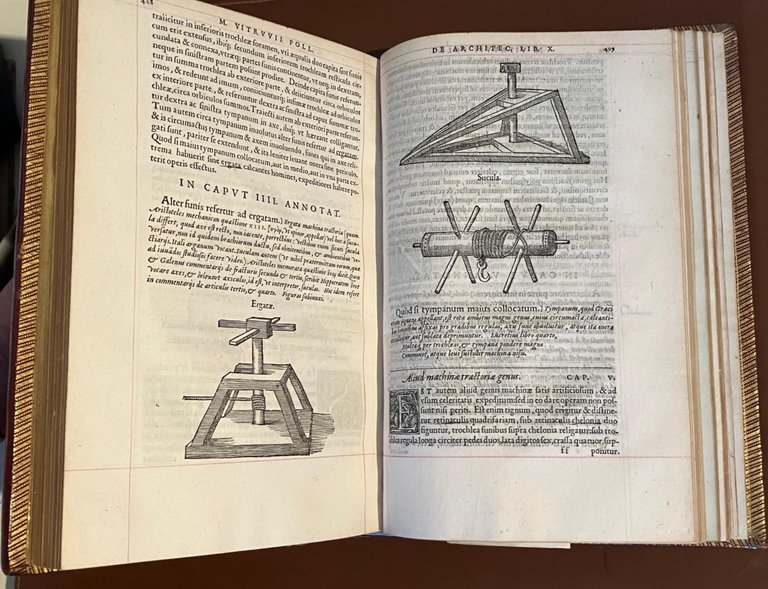
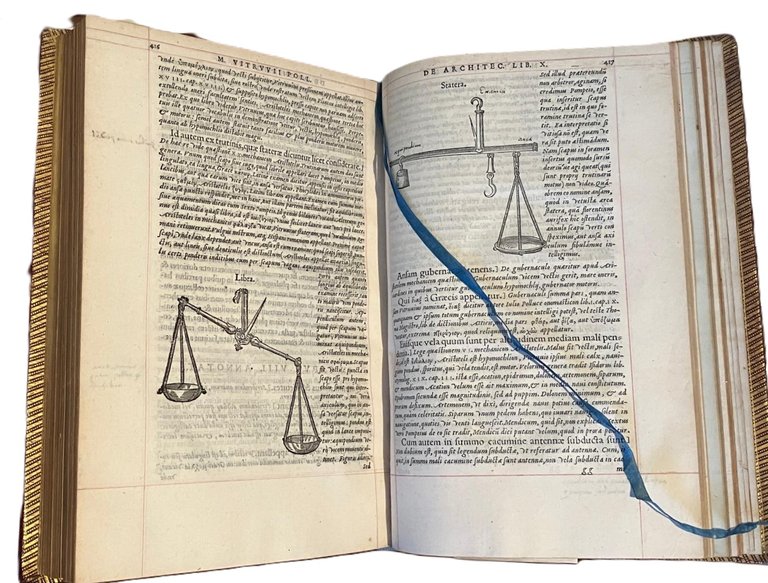

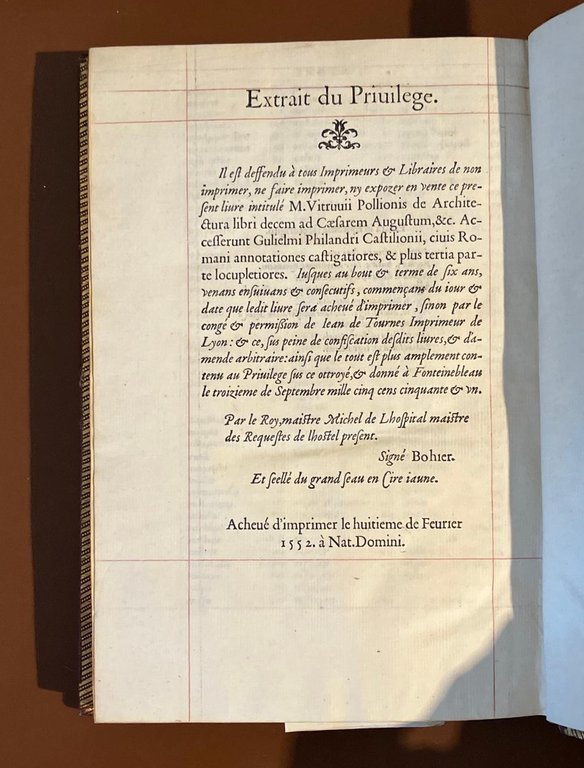
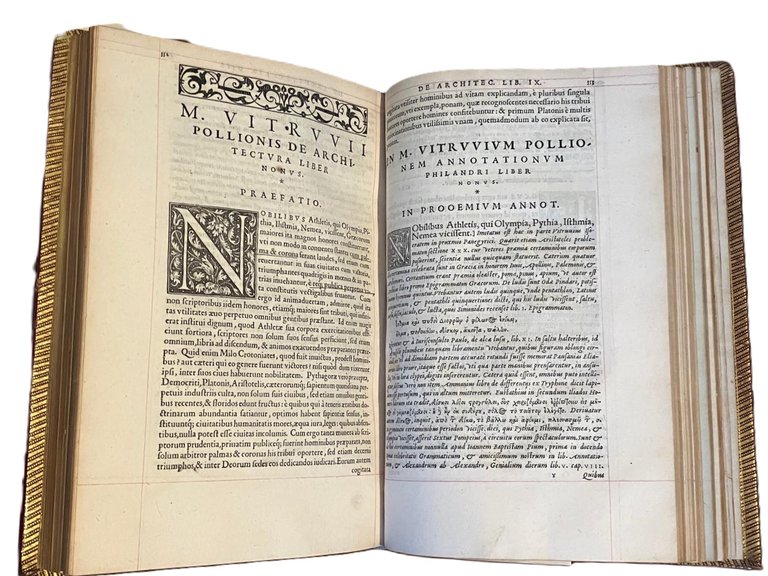
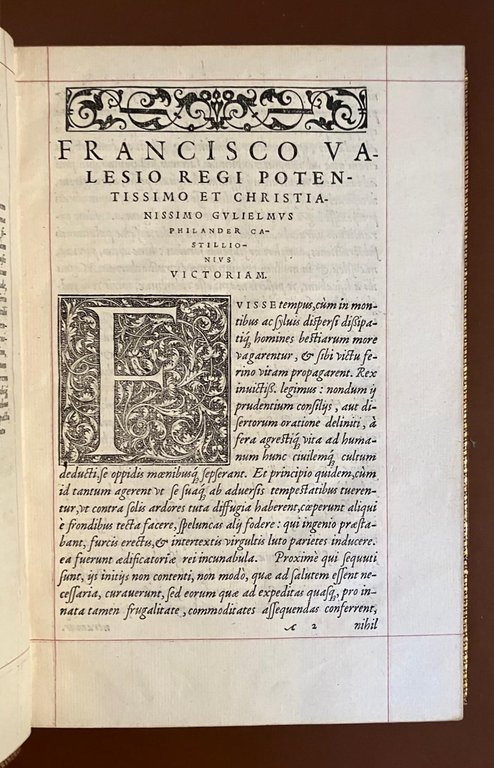
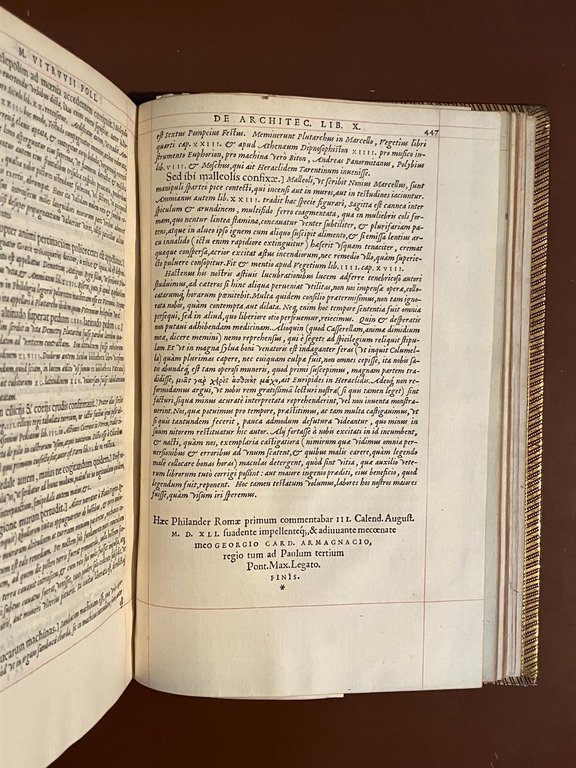
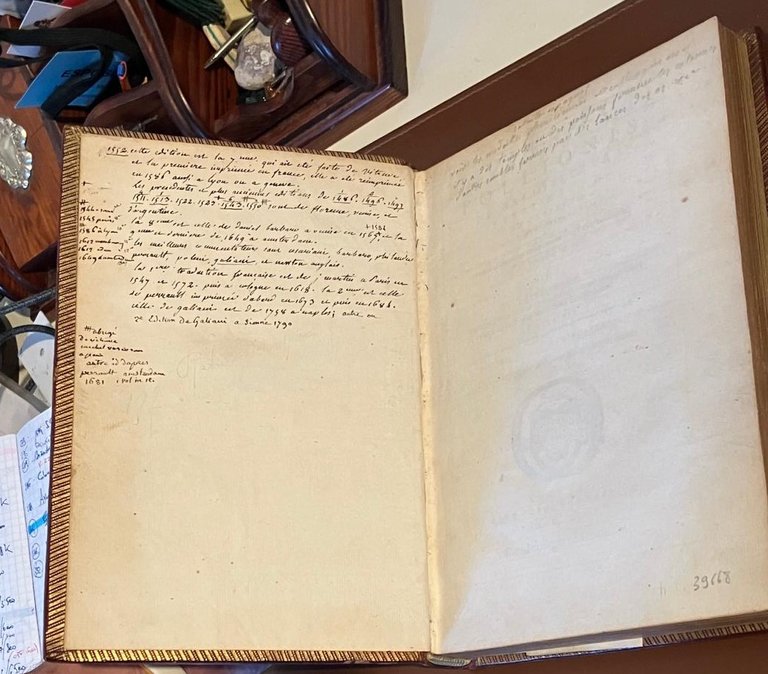
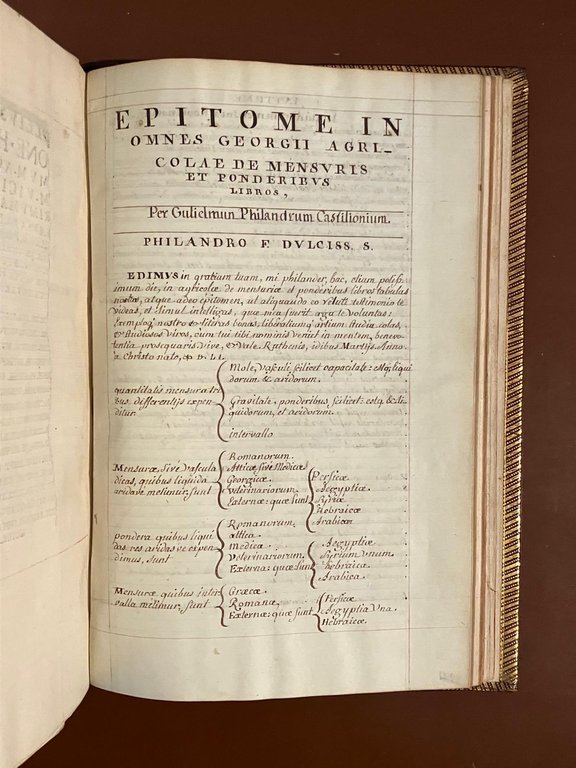

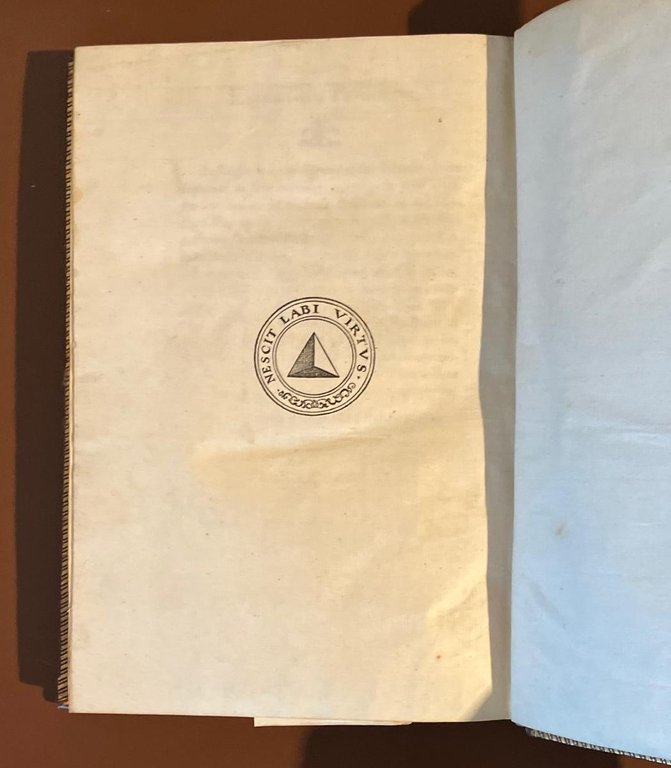

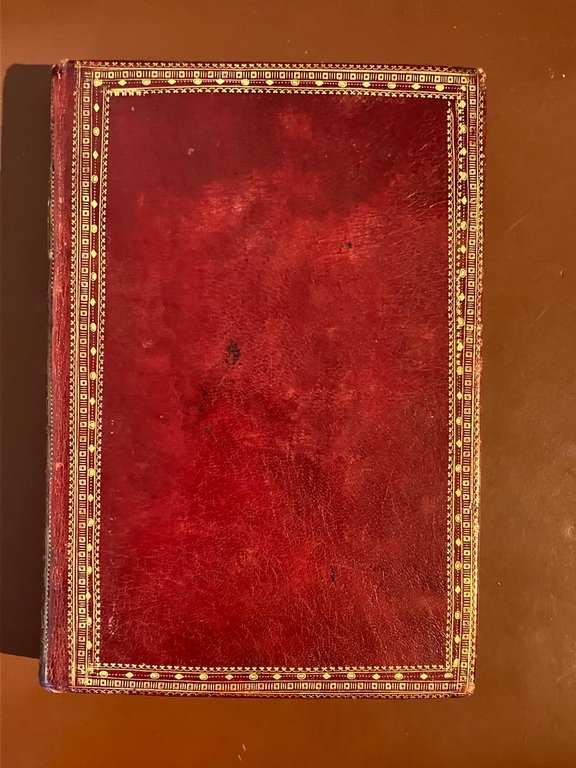
Libros antiguos y modernos
Vitruvius Pollio, Guillaume Philandrier (1505-1565), Bernard Solomon
DE ARCHITECTURA LIBRI DECEM... Accesserunt, Gulielmi Philandri... annotationes castigatiores, & plus tertia parte locupletiores...
1552
no disponible
Hermes Rare Books Studio Bibliografico (Geneve, Suiza)
Habla con el libreroLos gastos de envío correctos se calculan una vez añadida la dirección de envío durante la creación del pedido. El vendedor puede elegir uno o varios métodos de envío: standard, express, economy o in store pick-up.
Condiciones de envío de la Librería:
Para los productos con un precio superior a 300 euros, es posible solicitar un plan de pago a plazos al Maremagnum. El pago puede efectuarse con Carta del Docente, Carta della cultura giovani e del merito, Administración Pública.
Los plazos de entrega se estiman en función de los plazos de envío de la librería y del transportista. En caso de retención aduanera, pueden producirse retrasos en la entrega. Los posibles gastos de aduana corren a cargo del destinatario.
Pulsa para saber másFormas de Pago
- PayPal
- Tarjeta de crédito
- Transferencia Bancaria
-
-
Descubre cómo utilizar
tu Carta del Docente -
Descubre cómo utilizar
tu Carta della cultura giovani e del merito
Detalles
Descripción
1 volume in-4to, 8 ff. 447 pp., 36 ff including the typographic device; numerous xylographic figures in the text and a folded table folded, 83 vignettes including Philandirer’s portrait. The main illustrations, the four illustrations of the Circus, the Lateran and Modena marbles, are of Bernard Solomon. Numerous old handwritten notes. Minimal restoration to the title page. The Epitomes in omnes Georgii Agricolae were carefully handwritten and perfectly calligraphed at the time of binding on 8 sheets bound at the end. 18th century red Moroccan binding with golden dentelles on the plates, decorated spine, gilt edges.
Prima edizione del De Architecura di Vitruvio stampato in Francia e prima con il commento ampliato di Guillaume Philandrier che accompagna il testo integrale di Vitruvio.
L'edizione istituita da de Tournes ha la caratteristica di presentare infatti l'intero De Architectura in aggiunta alle Annotationes. L'aggiunta del testo di Vitruvio in cima alle annotazioni di ogni capitolo fu probabilmente un'iniziativa dell'editore di Lione che voleva offrire al pubblico il trattato vitruviano con il suo commento, sull'esempio del suo collega di Strasburgo, Georg Messerschmidt nel 1550. Il volume è completo con l'Epitome al trattato sui pesi e sulle misure di Giorgio Agricola, opera dello stesso Philandrier (qui in versione manoscritta settecentesca, inserita al tempo della rilegatura).
Si tratta di una versine delle Annotationes notevolmente ampliata e migliorata rispetto alla prima edizone pubblicata a Roma nel 1544, con nuove illustrazioni incise da Bernard Salomon. L'umanista Philandrier beneficiò del secondo soggiorno nella Città Eterna (1547-1550): nuovi riferimenti antichi e moderni, numerose testimonianze archeologiche di grande interesse legate ai recenti scavi e alle escursioni archeologiche effettuate con l'amico Ligorio a Roma e dintorni, in particolare a Tivoli. L'edizione di Lione contiene inoltre un ritratto dell'umanista.
La versione del De Architectura è probabilmente frutto del lavoro di De Tounres e non di Philandirer, benché quest'ultimo rimanga l'editore virtuale per le correzioni menzionate nelle sue Annotationes, molte delle quali saranno riprese da editori, commentatori e traduttori successivi (Messerschmidt, Barbaro, Perrault...).
L'editore e tipografo Jean deTournes, che aveva lavorato alla tipografia di Gryphius per più di dieci anni prima di mettersi in proprio nel 1542 e diventare stampatore del re nel 1559, aveva infatti imparato italiano, spagnolo, latino e greco nella sua bottega.
Jean II, figlio di Jean de Tournes, pubblicò un'edizione postuma della versione ampliata delle Annotationes del 1552 a Ginevra, dove si era rifugiato con un certo numero dei suoi compagni protestanti.
Nel 1552 Johannes de Laet riprodusse le Annotationes, precedute dal testo del De Architectura nel compendio vitruviano che fece uscire nel 1649 ad Amsterdam presso la tipografia di Louis Elzevier.
Bibliografia: A. Cartier, Bibliographie des éditions des De Tournes imprimeurs lyonnais, Introduction et appendices by M. Audin, biographical notes by E. Vial, Paris, Bibliothèque nationale, 1937-1938 ; reed. : Geneva, Slatkine Reprints, 1970. F. Lemerle, “Philandrier et le texte de Vitruve”, Mélanges de l’École française de Rome – Italie et Méditerranée, 106, 1994-2, pp. 517-529.
F. Lemerle, Les Annotations de Guillaume Philandrier sur le De Architectura de Vitruve, Livres I à IV, Introduction, translation and commentary, Paris, Picard, 2000.
F. Lemerle, “L’édition lyonnaise des Annotationes de Guillaume Philandrier (Jean de Tournes, 1552)” and note, in S. Deswarte Rosa (ed.), Sebastiano Serlio à Lyon, Architecture et imprimerie, Lyon, Mémoire Active, 2004, pp. 424-430, 431.
F. Lemerle, Guillaume Philandrier, Les Annotations sur l’Architecture de Vitruve, Livres V à VII, Introduction, translation and commentary, Paris, Garnier, 2011.
First edition of the whole De Architectura by Vitruvio printed in France and with the expanded commentary by Guillaume Philandrier accompanying the text of Vitruvius.
The edition published by Lyon editor Jean de Tournes has the characteristic of presenting the entire De Architectura in addition to the Philandrier’s Annotationes. The addition of Vitruvius' text at the top of the comments in each chapter was probably an initiative of the publisher who wanted to offer the public the Vitruvian treatise with the French humanist’s commentary, following the example of his colleague from Strasbourg, Georg Messerschmidt in 1550. The volume is complete with the Epitome to the treatise on weights and measures by Giorgio Agricola written by Philandrier himself (here in eighteenth-century manuscript, inserted at the time of re-binding).
This is a significantly enlarged and improved version of the Annotationes compared to the first edition published in Rome in 1544, with new illustrations engraved by Bernard Salomon. The humanist Philandrier benefited from his second stay in the Eternal City: new ancient and modern references, numerous archaeological ruins of great interest linked to recent excavations and archaeological excursions carried out with his friend Ligorio in Rome and surroundings, in particular in Tivoli. The Lyon edition also contains a portrait of the humanist.

